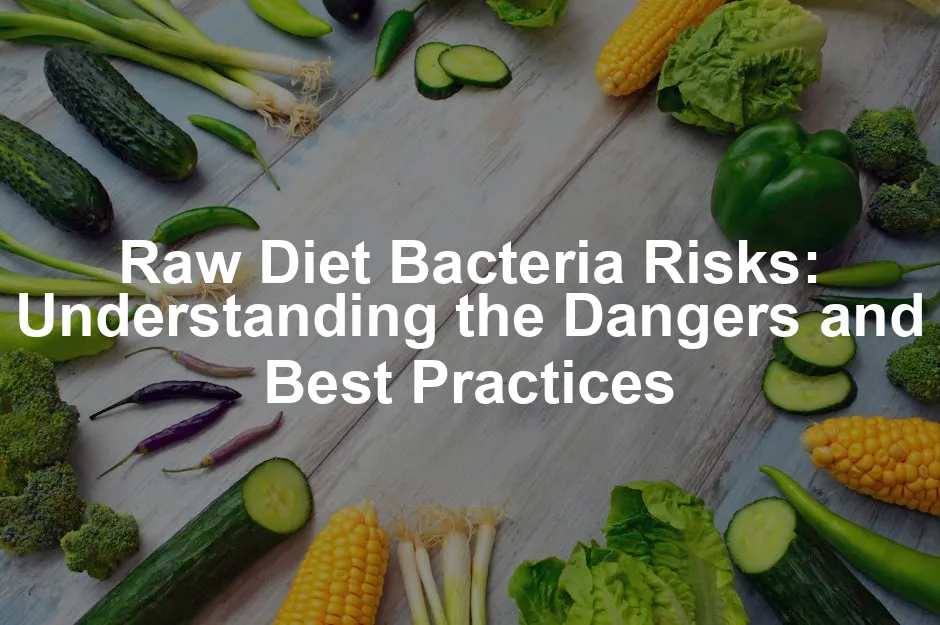Introduction
Raw diets for pets are gaining popularity. Many pet owners believe these diets are healthier alternatives. However, they come with significant risks, particularly from bacteria and pathogens. Understanding these dangers is vital for both pet and human health.
Speaking of healthy alternatives, if you’re looking for a convenient feeding solution, check out the PetSafe Healthy Pet Simply Feed Automatic Pet Feeder. This nifty gadget not only dispenses food at scheduled times but also helps control portion sizes, making it a great choice for busy pet owners who want to ensure their furry friends are well-fed without the fuss.
Summary and Overview
A raw diet typically consists of uncooked meat, bones, and organs. Many pet owners are drawn to this feeding method due to perceived health benefits. However, raw diets can harbor harmful bacteria like Salmonella, E. coli, and Listeria. These pathogens can lead to serious health issues in pets and their owners.
Salmonella, for example, can cause severe gastrointestinal illness in both pets and humans. E. coli can lead to infections, while Listeria poses risks, especially for pregnant women. It’s crucial for pet owners to adopt good hygiene practices to minimize these risks. Awareness of these dangers not only protects pets but also helps safeguard the health of humans, especially in households with children or vulnerable individuals.
To keep your pets healthy and happy, consider adding some nutritious dog food to their diet. The Blue Buffalo Life Protection Formula Adult Dog Food is a fantastic option packed with high-quality ingredients to support your dog’s health. So why not treat your pup to a diet that keeps them wagging their tails?
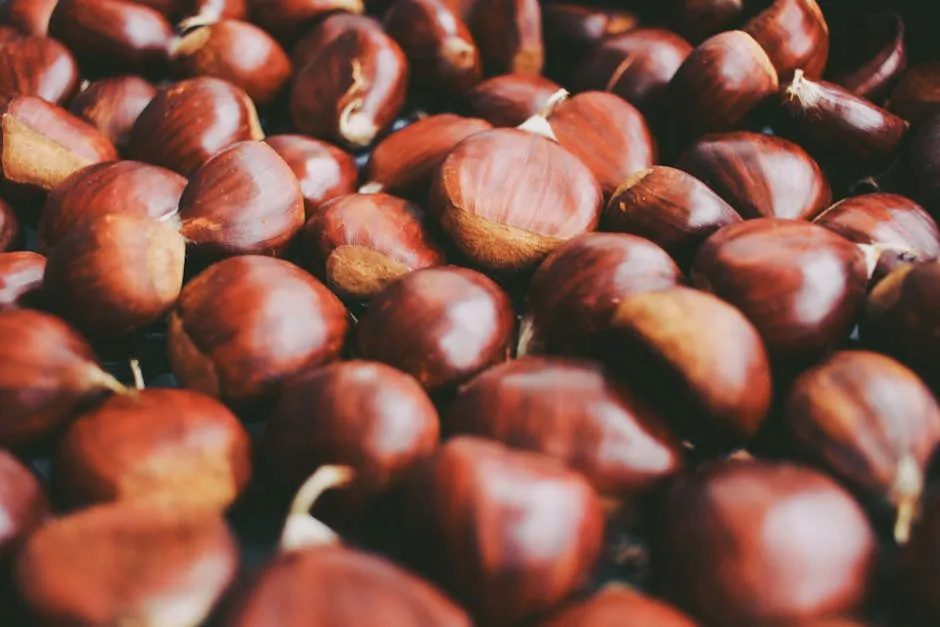
Understanding Raw Diets
What is a Raw Diet?
Raw meat-based diets (RMBDs) consist of uncooked animal products. They can include meat, bones, organs, and sometimes fruits and vegetables. Owners choose these diets believing they are more natural and beneficial. In fact, raw diets have seen a rise in popularity, with many pet owners reporting improvements in their pets’ health.
Despite these claims, scientific evidence supporting the benefits of RMBDs is limited. Many studies highlight the risks associated with raw feeding, including nutritional imbalances and bacterial contamination. It’s essential for pet owners to weigh these risks against the perceived benefits before making dietary changes. Consulting with a veterinarian can provide guidance on safe feeding practices and help ensure a balanced diet for pets. For more insights on canine nutrition, consider reading about the raw vs. kibble debate.
If you’re worried about your dog’s dental health, incorporating Vet’s Best Dog Toothpaste can be a game-changer. It’s formulated to reduce plaque and tartar buildup, ensuring your pup’s pearly whites stay healthy and shiny!
Nutritional Considerations
Feeding pets a balanced diet is crucial. A well-rounded diet supports their overall health and energy levels. Raw diets can sometimes lead to nutritional imbalances, especially if they are home-prepared. Pets need specific nutrients in precise amounts. Without careful planning, deficiencies can occur.
Consulting with a veterinary nutritionist is highly recommended. They can help formulate balanced diets that meet your pet’s unique needs. This guidance is especially important if you’re considering a raw feeding approach. Never underestimate the importance of proper nutrition for your furry friends.
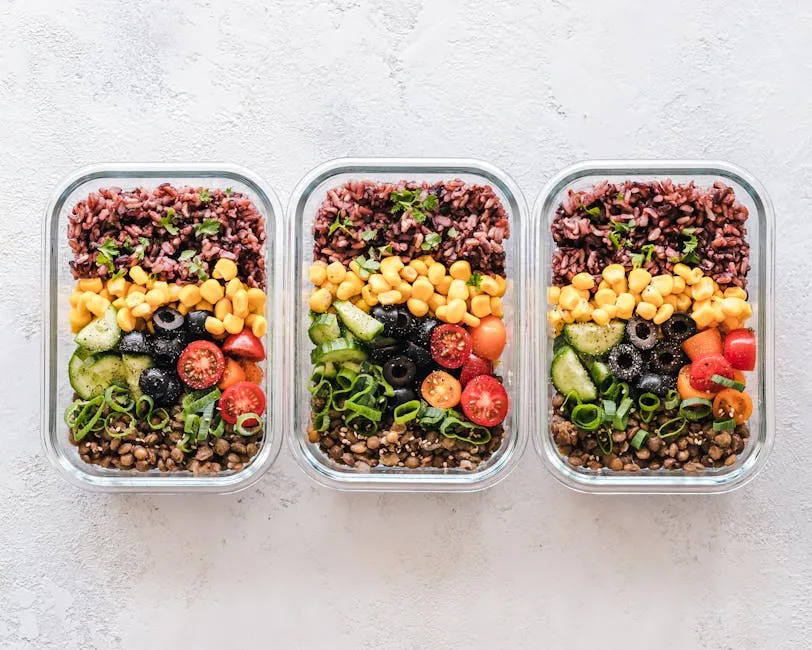
For a nutrient-rich option, consider Nature’s Logic Canine Chicken Meal. This premium dog food is made with whole foods, ensuring your pet receives the nutrients they need without any artificial additives!
Bacterial Risks Associated with Raw Diets
Common Pathogens Found in Raw Diets
Raw pet food can harbor harmful bacteria. Some of the most prevalent pathogens include Salmonella, E. coli, Listeria, and Campylobacter. Salmonella can be particularly concerning, with contamination rates in commercial raw pet food reported as high as 20%. E. coli is also common, with strains that can cause severe illness in humans.
Listeria is notorious for thriving at refrigeration temperatures, posing risks to pregnant women and vulnerable populations. Campylobacter, while usually killed by freezing, can still be present in raw diets. When handling raw food, proper hygiene is essential.
Statistics show that nearly 25% of raw dog food samples test positive for harmful bacteria. This raises significant public health concerns. The potential for zoonotic transmission is evident, with bacteria easily spreading from pets to humans. Maintaining cleanliness in food preparation and handling is crucial to mitigate these risks.
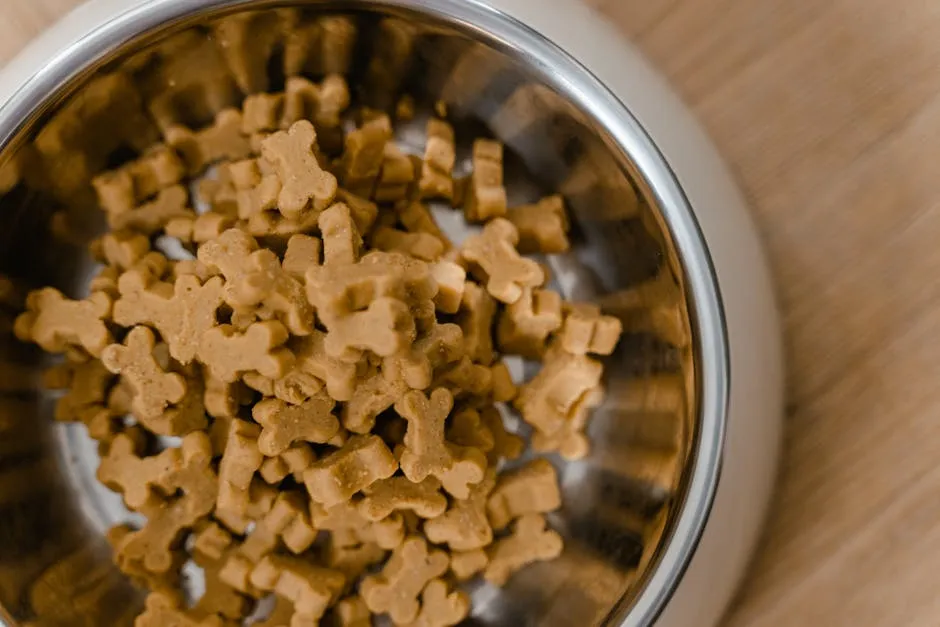
If you’re looking for a reliable way to keep your home clean, consider the Arm & Hammer Pet Stain and Odor Eliminator. It’s a lifesaver for cleaning up after your furry friends, so you can focus on what really matters—spending quality time with them!
Impact on Pet Health
Bacterial infections in pets can lead to serious health issues. Symptoms may include vomiting, diarrhea, lethargy, and loss of appetite. Some pets may experience severe reactions, requiring veterinary care. Long-term implications can affect a pet’s health and quality of life.
Pets consuming raw diets may also shed harmful bacteria in their feces, posing additional risks to household members. Understanding these potential dangers is essential for pet owners. By being aware of the risks and symptoms, you can ensure your pet’s safety and well-being while making informed dietary choices.
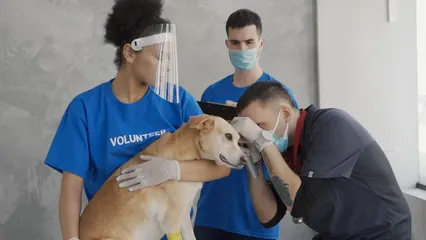
Mitigating Infection Risks
Best Hygiene Practices for Raw Diets
When feeding pets a raw diet, hygiene is crucial. Start by washing your hands thoroughly. Always scrub with soap and water for at least 20 seconds after handling raw food. This simple act can significantly reduce the risk of transferring bacteria.
Next, ensure that preparation surfaces are clean. Use disinfectants on countertops, cutting boards, and utensils. It’s wise to designate specific tools for raw food to avoid cross-contamination. Avoid washing raw meat, as this can splatter harmful bacteria onto your kitchen surfaces.
Food storage is equally important. Keep raw meat in the freezer until you need it. When thawing, use the refrigerator or microwave—never the countertop. This keeps bacteria from multiplying. Finally, be vigilant about handling pet waste. Clean up promptly and wash hands after touching litter boxes or feces to minimize bacterial spread.

Educating Pet Owners
Educating pet owners on the risks of raw diets is essential. Many may not realize the potential dangers associated with harmful bacteria. Veterinary professionals play a key role in this education. They can provide resources and guidance to pet owners considering raw feeding.
Regular discussions about safe practices can empower owners to make informed choices. Informing them about the importance of hygiene and safe food handling can reduce health risks for both pets and humans. Veterinarians can also share insights on recognizing symptoms of bacterial infections in pets, ensuring swift action if needed.

Public Health Concerns
The One Health Perspective
The One Health perspective emphasizes the interconnectedness of animal, human, and environmental health. When pets consume raw diets, they can carry pathogens that affect not just their health but also that of their owners. Bacteria like Salmonella and E. coli can spread from pets to humans, increasing the risk of foodborne illnesses.
Antibiotic resistance is another concern linked to raw diets. Studies have shown that pets on raw diets may carry resistant strains of bacteria, complicating treatment options for infections. This poses a significant public health challenge, as it can lead to infections that are difficult to treat.
Statistics highlight the urgency of this issue. The Centers for Disease Control and Prevention (CDC) reports thousands of cases of foodborne illnesses each year, emphasizing the need for safe pet feeding practices. By understanding these risks, we can better protect our pets and ourselves.
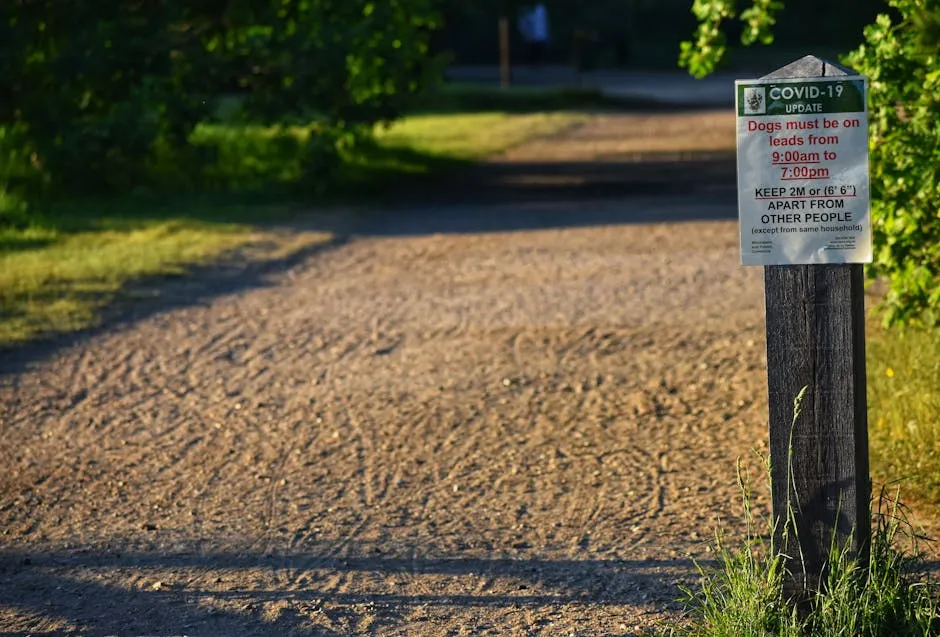
Regulatory Oversight and Safety Measures
Raw pet food regulations vary by region. In the U.S., the FDA monitors pet food safety but lacks strict regulations for raw diets. Unlike human food, which undergoes rigorous scrutiny, raw pet food often escapes the same level of oversight. This gap raises concerns about contamination.
To enhance safety, manufacturers should adhere to strict hygiene standards. They must source high-quality ingredients, ideally from suppliers who meet human food safety standards. Regular testing for pathogens is essential. Transparency in sourcing and production practices can help build consumer trust.
Additionally, manufacturers should educate pet owners about safe handling practices. Providing clear guidelines on storage, preparation, and serving can significantly reduce risks. Collaborating with veterinary professionals ensures that pet owners receive accurate information on feeding raw diets safely.
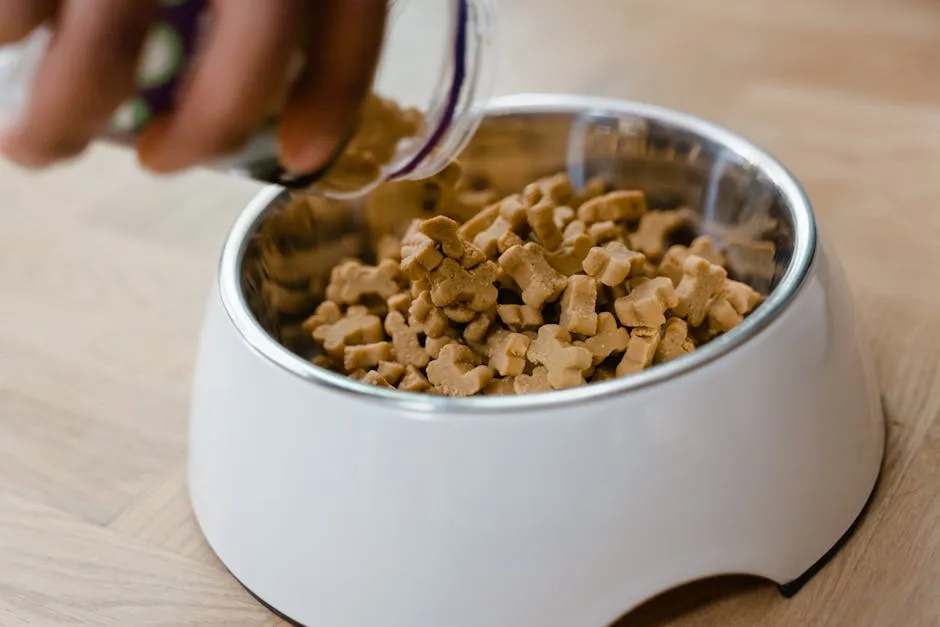
Conclusion
Raw diets carry risks for pets, primarily due to harmful bacteria. Contaminated food can lead to serious health issues for both animals and humans. It’s crucial for pet owners to understand these dangers and make informed decisions.
Being proactive about hygiene and food safety is vital. Always consult with a veterinarian before altering your pet’s diet. Ongoing research is needed to monitor the impacts of raw diets, ensuring best practices are followed for the health of our furry friends. For a detailed look at raw food safety for dogs, consider checking out our comprehensive guide.
FAQs
What are the main bacteria found in raw pet food?
Raw pet food commonly contains Salmonella, E. coli, Listeria, and Campylobacter. These pathogens can cause severe illness in both pets and humans. Salmonella, for instance, can lead to gastrointestinal issues, while E. coli can result in infections. It’s essential to understand these risks when considering a raw diet.
How can I safely handle raw pet food?
To safely handle raw pet food, wash your hands thoroughly after touching it. Use separate cutting boards and utensils for raw food. Always clean surfaces and bowls after use. Store raw food in sealed containers in the refrigerator or freezer to prevent contamination. Avoid letting pets lick your face or hands after they eat raw food.
Are there benefits to feeding my pet a raw diet?
Many pet owners believe raw diets offer health perks. Advocates claim benefits like shinier coats and improved digestion. Some studies even suggest enhanced gut health in raw-fed pets. However, these claims often lack robust scientific backing. While some pets may thrive on raw diets, the risks are significant. Harmful bacteria like Salmonella and E. coli can thrive in raw meat. These bacteria not only affect pets but can also pose health risks to humans. It’s crucial to weigh these potential benefits against the dangers. Always consult your veterinarian before making dietary changes.
What should I do if my pet shows symptoms of a bacterial infection?
If your pet exhibits signs of a bacterial infection, swift action is essential. Common symptoms include vomiting, diarrhea, lethargy, and loss of appetite. If you notice these signs, contact your veterinarian immediately. Prompt veterinary care is vital for diagnosing and treating infections. Your vet may recommend tests to identify the specific bacteria involved. Early intervention can prevent more severe health issues and ensure your pet’s recovery.
How can I ensure my pet receives a balanced diet if I choose raw feeding?
To provide a balanced diet for your pet on a raw feeding regimen, consulting a veterinary nutritionist is key. They can help formulate a diet that meets all nutritional needs. Pets require specific vitamins, minerals, and proteins for optimal health. Home-prepared raw diets can lead to nutritional imbalances if not properly planned. Your nutritionist will guide you in choosing suitable ingredients and proportions. Regular check-ups will help monitor your pet’s health and adjust the diet as needed.
What are the risks of raw diets for households with children or immunocompromised individuals?
Raw diets pose increased risks in homes with children and vulnerable individuals. Young children and those with weakened immune systems are more susceptible to infections. Bacteria such as Salmonella and E. coli can easily spread from pets to humans. If you have children or immunocompromised individuals at home, caution is essential. Implement strict hygiene practices when handling raw pet food. Always wash your hands after touching your pet or their food. Educate your family about the potential risks to ensure everyone’s safety.
Are there alternatives to raw diets that are safer for pets?
Yes, there are safer alternatives to raw diets for pets. Commercially prepared pet foods undergo rigorous safety checks. These foods are formulated to provide balanced nutrition without the risks associated with raw meat. Look for high-quality, complete, and balanced dog or cat foods. These options often contain similar ingredients to raw diets but are cooked to eliminate harmful bacteria. Consult your veterinarian for recommendations on safe and nutritious pet food brands. For more information on safe feeding practices, consider subscribing to pet health newsletters. Remember, consult with your veterinarian before making any dietary changes for your furry friend.
Please let us know what you think about our content by leaving a comment down below!
Thank you for reading till here 🙂
All images from Pexels

